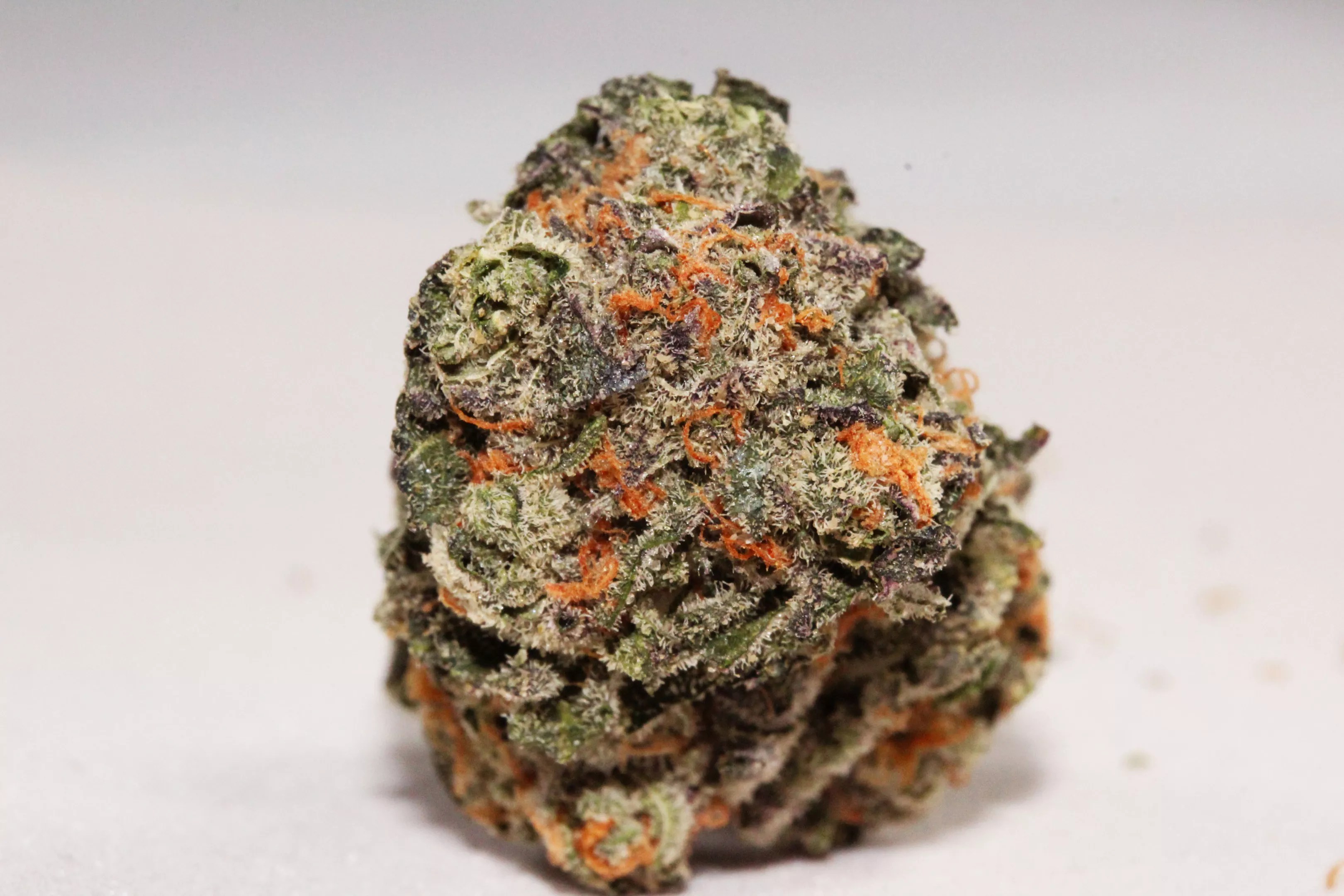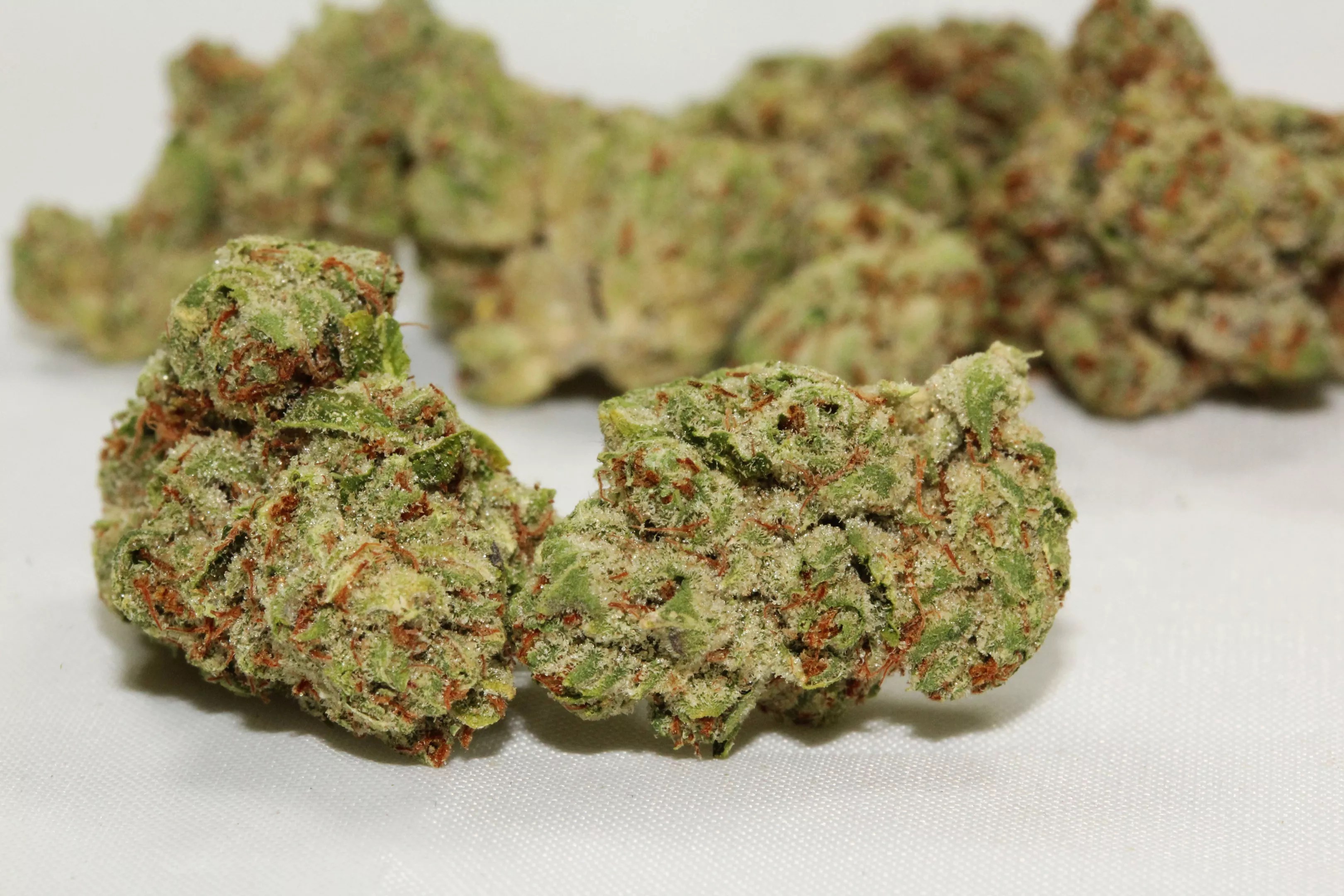
Chuck Haze

Audio By Carbonatix
Marijuana is a smorgasbord of hues. Each
Based on its looks, you would assume that this strain is great to indulge in. In fact, there are many reasonable assumptions to be drawn from all of Charles’s different shades.
But what if most of those assumptions are based on misinformation? We all love the amber hairs, golden trichomes and deep purples in our marijuana – but do they really mean anything? Do we know where these colors come from? Do certain colors affect the strength or taste of weed?
We’re here to help you sort through the mess with some nerdy tips about colors in marijuana, including where they come from, their purposes, and how they affect your stash.
Phytochemicals and color
Purple leaves aren’t an indicator of strength, so what makes this color appear? A phytochemical (a biological compound in plants) called anthocyanin, a water-soluble
Purple can also be provoked out of strains by causing chlorophyll deficiencies with temperature and other techniques.
Types of phytochemicals
The colors in each
- Anthocyanin – Blue/Purple
- Anthoxanthin – White/Cream
- Carotenoids – Yellow/Orange
- Chlorophyll – Green
- Lycopene – Red
When the plants feel it’s harvest time, nature invokes the change, allowing marijuana flowers to mature into color like autumn leaves until they’re ready to be plucked. This is when each phytochemical blooms, showing us the full-color spectrum of what each strain has to offer.

Kosher Kush’s pistils are a rusty orange.
Chuck Haze
Pistils are for girls
Pistils, those tiny hairs that cover buds, are more important than you might have thought. Pistils are pollen-catching hairs that pop out of the calyx during the plant’s vegetative stage. They’re ghost-white until the plant reaches its flowering stage. At that time, their priorities switch from sprouting to pollen-catching; that pollen either births seeds or aids bud growth. Once the
Fun fact: Pistils are often referred to as cannabis vaginas, as they are the bud’s sexual organ. They contain ovaries, birth pollinated seeds and even have their own form of menopause once they’re beyond maturity.
There are antioxidants in phytochemicals
While phytochemicals and pistils are essential to each
Some scientists believe there is a link between phytochemicals that provide antioxidants and health benefits from ingesting cabbage, raspberries and red onions and the phytochemicals that spark color changes in cannabis – but more research is required to confirm these claims.